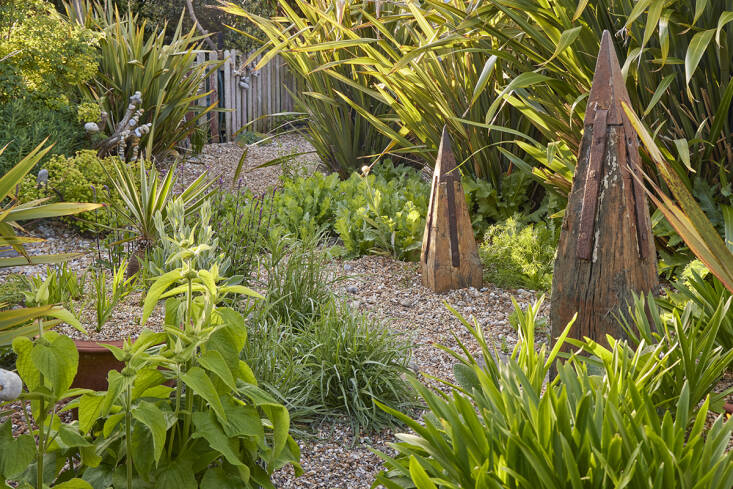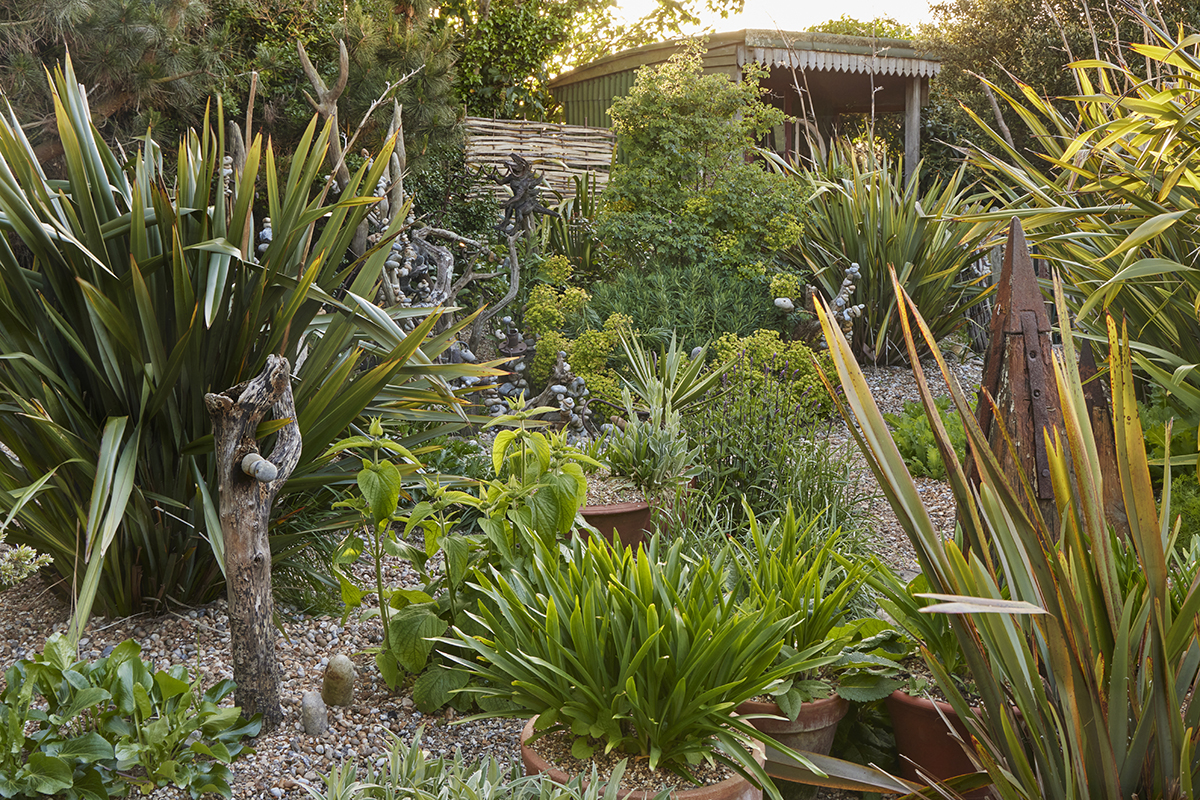How to describe Dungeness on the south coast of England? Let’s start with the weather: “Wild, extreme, elemental… salt wind, predominantly from the south-west, cold Easterlies, intense searing sun.” This is according to Kathryn Morris, owner of the Roundhouse, the only property on this shingled promontory that has sheltering hedges and a fence. Dungeness is a conservation area and a Site of Special Scientific Interest, as well as a site of great horticultural interest to the many pilgrims who come here to see the garden of artist and writer Derek Jarman, made famous in the timeless book, Derek Jarman’s Garden.
Referencing a 19th century collection of ghost stories, Jarman describes Dungeness as the fifth quarter of the globe, the other four being Europe, Asia, Africa and America. With its own historic nuclear power station (currently being decommissioned), Dungeness is a kind of republic, and certainly a place set apart. Join us for a visit to one of its more unusual corners.
Photography by Caitlin Atkinson, for Gardenista.
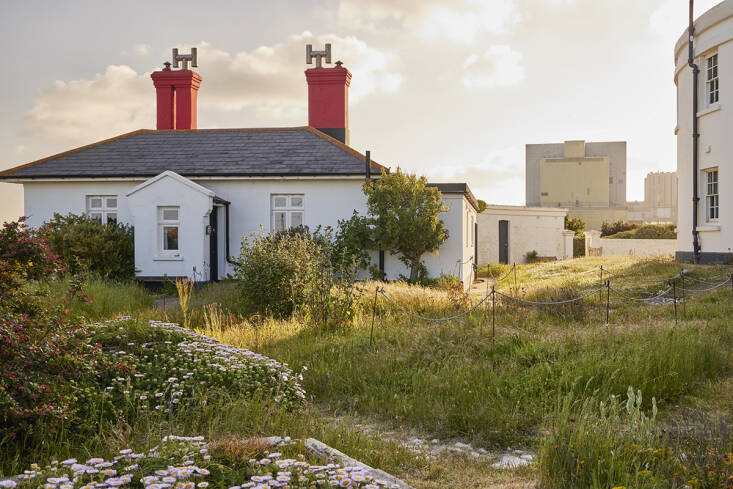
Dungeness is home to 600 species of plant (one third of all plants found in the UK, according to the Dungeness National Nature Reserve). The landscape is therefore “vegetated shingle” (shingles here meaning beach gravel). At the Roundhouse, built around the foundations of a 1792 lighthouse, the gardens around two lighthouse keepers’ cottages have a layer of soil, since the two families needed to feed themselves in this barely populated place. “There are historical photos of greenhouses and neatly laid out vegetable plots, and bee hives,” says Kathryn. Now, people interested in lunch form an orderly queue outside the Dungeness Snack Shack for the best lobster rolls this side of the Atlantic.
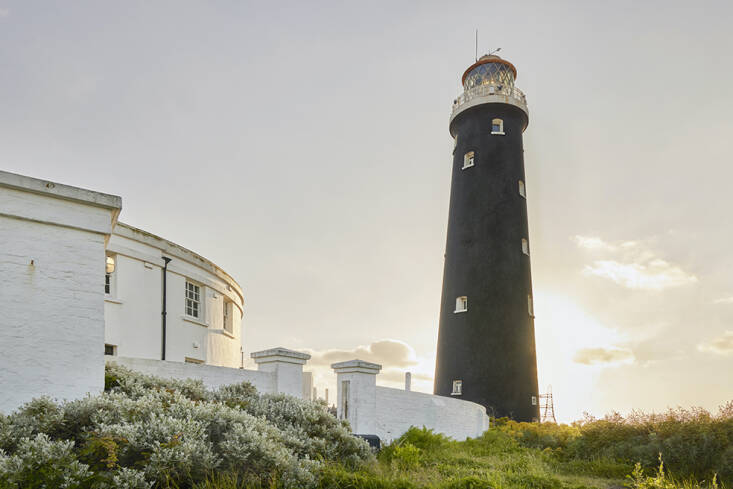
The Roundhouse was built in 1843, partly to shore up the base of the lighthouse tower, and the two lighthouse keepers’ cottages were added at this time. When the old lighthouse was demolished at the beginning of the twentieth century to make way for a taller one next to it, rubble was dumped into what is now Kathryn’s back garden, which is why the ground is “very topsy-turvy.”
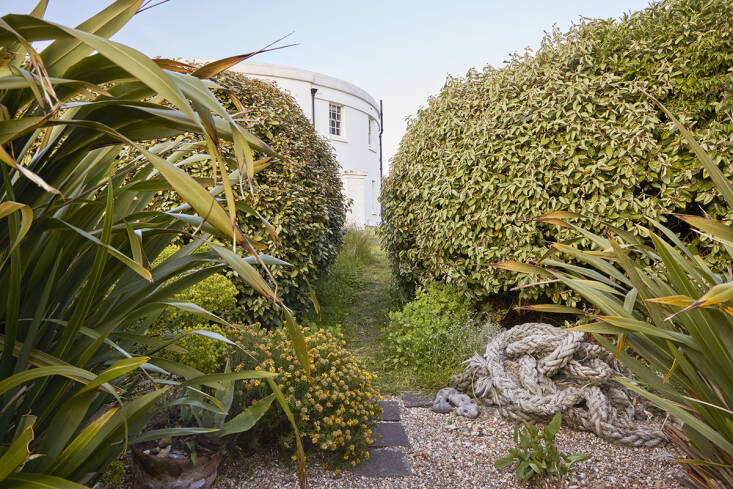
Kathryn’s own garden is accessed through a narrow gap in the hedge. The garden was made by Kathryn’s father, after he bought the property on impulse about 30 years ago. He was an artist and sculptor, which is evident in the way he used found materials and built structures, but he was also a smart gardener, creating enclosures—and sheltered places within those enclosures.
One of the former cottage tenants works at Great Dixter house and gardens, a 40-minute drive away. Kathryn asked her to find someone to help steer the Roundhouse garden after she inherited the property, and along came Marc O’Neill: “I immediately said I would, as I love Dungeness.”
